With food price inflation, recession, and the rise of the discounters, it’s been a helter skelter year. As we reveal this year’s risers and fallers, Robyn Lewis reports on the battle raging between branded and own label
Audis in the Aldi car park. Lobster at Lidl. With the promise of not just cheaper own label, but quality own label, “the economic downturn has played straight into the hands of discount retailers,” says Stuart Whitwell, joint MD of consultancy Intangible Business. “Based on lower overheads, international economies of scale and an abundance of own-label brands, Aldi and Lidl have been the stars of the show.”
Supermarkets have hit back, and with uncomfortable consequences. In a plug for its own labels, Sainsbury’s chief -executive Justin King described the battle with brands as “Darwinian”.
Tesco joined in, running TV ads actively discouraging shoppers from buying leading brands, including Warburtons bread. The effect of this war has been tumultuous. In what was already going to be a topsy turvy year, with food price inflation itself running at 10% on average, own-label sales were up 6.3%, against total sales up 4.4%, as volumes declined by 3%, according to The Grocer’s Top Products Survey 2008.
A report by Intangible Business released this autumn warned that even the biggest brands were facing a tough 2009. Based on our survey in association with Nielsen, the hard times have already begun: leading brands such as Benson & Hedges, Innocent, Kronenbourg, Nescafé and Cadbury’s Flake all fell in value.
Of course, in some categories, the pattern reverts to type, with leading brands such as Warburtons, Walkers, Cathedral City and Cravendale extending their lead over rivals on the back of strong branding, national rollout, innovation and – in some cases – deep promotional pockets.
And own label made most gains this year in categories where it has always done well: in bread, up 23.2% to £324.8m versus 16.2% overall; butters and spreads, up 30% to £175.9m in a sector up 17%; and petcare, up 13.5% in a market up just 2.6%.
But what is interesting this year – and looks set to accelerate in 2009 – is the new generation of ‘secret save brands’ hitting the US, France, and – through Tesco – the UK.
“Tesco’s move to copy Aldi and Lidl with invented branded products is extremely interesting,” says Interbrand UK CEO Rune Gustafson. “People are more careful with their money but have come to want premium products. And whereas retailer own brands are seen as cheap and to be avoided, such half-brands offer both a premium proposition and a lower price.”
These tertiary lines are allowing own label to move into categories where it has previously struggled to find a foothold, such as toothpaste, laundry and cosmetics, says Don Williams, CEO of branding and design consultancy Pi Global. “Traditionally the threat of own label to brands has been in the more commoditised categories, such as pasta, milk, rice and bread, or where products lack emotional appeal.”
Conversely ‘intimate’ categories, such as beauty products, are difficult for own label to penetrate. Brands also perform strongly if they have a unique taste or a recipe we feel has never been replicated – Coca-Cola, Heinz ketchup or Marmite, for example.
Wal-Mart’s Equate, a health and beauty range, and the voluminous press coverage taste-testing increasingly extensive ranges – not to mention Justin King’s very particular comments about ketchup – suggest a possible upset to the status quo.
Anchor cheese, another high-profile casualty this year, can also be seen in this light. The block Cheddar sector is dominated by own label, accounting for £1.4bn of the £2.2bn market, and brand leader Cathedral City is the only big-hitting brand – nearest rival Seriously is worth just £52.9m. Even with the might of Arla Foods behind it and the weight of the butter brand of the same name, Anchor failed to differentiate itself sufficiently.
Other brands are managing the challenge slightly better, however, including SCA’s £104.2m Velvet toilet roll brand. As the number two brand in the market it is still far behind top-placed Andrex, worth £337.3m, and own label on £472.6m. Yet it is still posting growth, up 0.7% compared with Andrex’s 0.3% decline, because it offers something genuinely different, says marketing director Chris Burtlett.
“It’s the ‘me-too’ brands that offer little else but a value proposition over the category leader – a position own label can adopt quite easily – that will fail,” Burtlett argues. “With a category like ours people stick with what they know and the category leader tends to be either the first to market or has the biggest company behind it, so it’s tough.
“What we have to do as a challenger brand is be more than just cheaper. It boils down to giving a genuine reason for consumers to reappraise their choices.”
One point of difference is to make scientific functional or health claims, as retailers rely on brand suppliers to invest in R&D and cannot copy the technology easily in their own offerings. This helps explain the success of Danone’s Activia yoghurt range, which grew 37.5% to £161.7m this year.
“The probiotic we use is proprietary, which means only we can use it, only we can advertise it,” says Danone external communications director Trevor Datson.
Similarly, United Biscuits has spent five years developing ways to cut saturated fat without compromising taste. McVitie’s Digestives, the leading biscuit range, was relaunched this autumn with reduced sat fat, and similar plans are in play for its McCoy’s crisps and Go Ahead! range.
Retro brands are also well positioned, as are feelgood brands and those that aid good housekeeping, says Claire Nuttall, director of consumer brands at Dragon Brands. “Brands that offer some kind of comfort and nostalgia will thrive in a tough climate,” she says, “as well as brands that have humour and a lightness of spirit.
“Housekeeping will also become more of an art form: making more of leftovers and using humbler cuts of meat. So, products that boost our culinary knowhow or enhance foods without having to spend the earth are also likely to do well.”
View The Grocer's definitive Top Products 2008 survey
Audis in the Aldi car park. Lobster at Lidl. With the promise of not just cheaper own label, but quality own label, “the economic downturn has played straight into the hands of discount retailers,” says Stuart Whitwell, joint MD of consultancy Intangible Business. “Based on lower overheads, international economies of scale and an abundance of own-label brands, Aldi and Lidl have been the stars of the show.”
Supermarkets have hit back, and with uncomfortable consequences. In a plug for its own labels, Sainsbury’s chief -executive Justin King described the battle with brands as “Darwinian”.
Tesco joined in, running TV ads actively discouraging shoppers from buying leading brands, including Warburtons bread. The effect of this war has been tumultuous. In what was already going to be a topsy turvy year, with food price inflation itself running at 10% on average, own-label sales were up 6.3%, against total sales up 4.4%, as volumes declined by 3%, according to The Grocer’s Top Products Survey 2008.
A report by Intangible Business released this autumn warned that even the biggest brands were facing a tough 2009. Based on our survey in association with Nielsen, the hard times have already begun: leading brands such as Benson & Hedges, Innocent, Kronenbourg, Nescafé and Cadbury’s Flake all fell in value.
Of course, in some categories, the pattern reverts to type, with leading brands such as Warburtons, Walkers, Cathedral City and Cravendale extending their lead over rivals on the back of strong branding, national rollout, innovation and – in some cases – deep promotional pockets.
And own label made most gains this year in categories where it has always done well: in bread, up 23.2% to £324.8m versus 16.2% overall; butters and spreads, up 30% to £175.9m in a sector up 17%; and petcare, up 13.5% in a market up just 2.6%.
But what is interesting this year – and looks set to accelerate in 2009 – is the new generation of ‘secret save brands’ hitting the US, France, and – through Tesco – the UK.
“Tesco’s move to copy Aldi and Lidl with invented branded products is extremely interesting,” says Interbrand UK CEO Rune Gustafson. “People are more careful with their money but have come to want premium products. And whereas retailer own brands are seen as cheap and to be avoided, such half-brands offer both a premium proposition and a lower price.”
These tertiary lines are allowing own label to move into categories where it has previously struggled to find a foothold, such as toothpaste, laundry and cosmetics, says Don Williams, CEO of branding and design consultancy Pi Global. “Traditionally the threat of own label to brands has been in the more commoditised categories, such as pasta, milk, rice and bread, or where products lack emotional appeal.”
Conversely ‘intimate’ categories, such as beauty products, are difficult for own label to penetrate. Brands also perform strongly if they have a unique taste or a recipe we feel has never been replicated – Coca-Cola, Heinz ketchup or Marmite, for example.
Wal-Mart’s Equate, a health and beauty range, and the voluminous press coverage taste-testing increasingly extensive ranges – not to mention Justin King’s very particular comments about ketchup – suggest a possible upset to the status quo.
Top Products survey 2008
The Grocer's Top Products Survey is sourced using data from Nielsen's Scantrack service, which monitors weekly sales data from a nationwide network of EPoS checkout scanners and represents sales in over 65,000 outlets nationwide including grocery multiples, co-ops, multiple off-licences, independents, multiple forecourts and symbols. Data for nappies and baby, personal care and OTC is sourced from Nielsen's Personal Care and Over the Counter services, which include grocery multiples, impulse and chemist trade channels. Nielsen's Retail Measurement Service provides comprehensive information on actual purchases, market shares, distribution, pricing and promotional activities, and is the fastest and most accurate monitor of consumer sales in Europe. Nielsen services are constantly improved to reflect the retail marketplace, with back data being regularly reprocessed. Nielsen's Scantrack service records 87p in every pound spent in the UK grocery and impulse market with full scanning inputs. It offers the UK's most comprehensive read.
As this new generation of own label develops, at the very least, experts suggest mid-sized and challenger brands will struggle. A good example is the demise of P&J Smoothies. It was repositioned as a value brand prior to the launch of a smoothie range under PepsiCo’s Tropicana brand. Shorn of its distinctive branding, it lost out to cheaper own-label rivals and will be delisted by the end of January.The Grocer's Top Products Survey is sourced using data from Nielsen's Scantrack service, which monitors weekly sales data from a nationwide network of EPoS checkout scanners and represents sales in over 65,000 outlets nationwide including grocery multiples, co-ops, multiple off-licences, independents, multiple forecourts and symbols. Data for nappies and baby, personal care and OTC is sourced from Nielsen's Personal Care and Over the Counter services, which include grocery multiples, impulse and chemist trade channels. Nielsen's Retail Measurement Service provides comprehensive information on actual purchases, market shares, distribution, pricing and promotional activities, and is the fastest and most accurate monitor of consumer sales in Europe. Nielsen services are constantly improved to reflect the retail marketplace, with back data being regularly reprocessed. Nielsen's Scantrack service records 87p in every pound spent in the UK grocery and impulse market with full scanning inputs. It offers the UK's most comprehensive read.
Anchor cheese, another high-profile casualty this year, can also be seen in this light. The block Cheddar sector is dominated by own label, accounting for £1.4bn of the £2.2bn market, and brand leader Cathedral City is the only big-hitting brand – nearest rival Seriously is worth just £52.9m. Even with the might of Arla Foods behind it and the weight of the butter brand of the same name, Anchor failed to differentiate itself sufficiently.
Other brands are managing the challenge slightly better, however, including SCA’s £104.2m Velvet toilet roll brand. As the number two brand in the market it is still far behind top-placed Andrex, worth £337.3m, and own label on £472.6m. Yet it is still posting growth, up 0.7% compared with Andrex’s 0.3% decline, because it offers something genuinely different, says marketing director Chris Burtlett.
“It’s the ‘me-too’ brands that offer little else but a value proposition over the category leader – a position own label can adopt quite easily – that will fail,” Burtlett argues. “With a category like ours people stick with what they know and the category leader tends to be either the first to market or has the biggest company behind it, so it’s tough.
“What we have to do as a challenger brand is be more than just cheaper. It boils down to giving a genuine reason for consumers to reappraise their choices.”
One point of difference is to make scientific functional or health claims, as retailers rely on brand suppliers to invest in R&D and cannot copy the technology easily in their own offerings. This helps explain the success of Danone’s Activia yoghurt range, which grew 37.5% to £161.7m this year.
“The probiotic we use is proprietary, which means only we can use it, only we can advertise it,” says Danone external communications director Trevor Datson.
Similarly, United Biscuits has spent five years developing ways to cut saturated fat without compromising taste. McVitie’s Digestives, the leading biscuit range, was relaunched this autumn with reduced sat fat, and similar plans are in play for its McCoy’s crisps and Go Ahead! range.
Retro brands are also well positioned, as are feelgood brands and those that aid good housekeeping, says Claire Nuttall, director of consumer brands at Dragon Brands. “Brands that offer some kind of comfort and nostalgia will thrive in a tough climate,” she says, “as well as brands that have humour and a lightness of spirit.
“Housekeeping will also become more of an art form: making more of leftovers and using humbler cuts of meat. So, products that boost our culinary knowhow or enhance foods without having to spend the earth are also likely to do well.”
View The Grocer's definitive Top Products 2008 survey



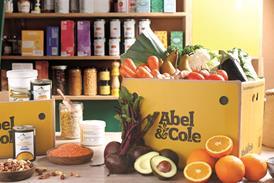
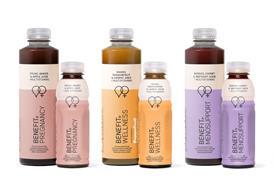







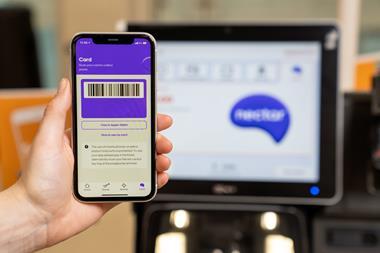



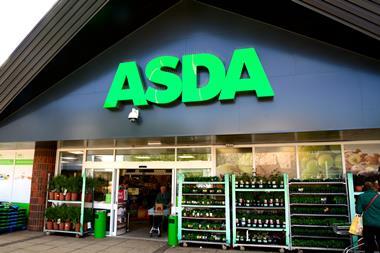
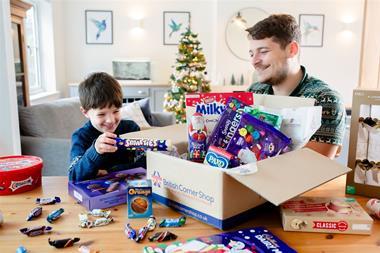
No comments yet